Photographing Fogo Island, Newfoundland
Nestled off the rugged coast of Newfoundland, the island of Fogo stands as a testament to the untamed beauty of Canada's easternmost province. Fogo Island, with its rich cultural heritage, dramatic landscapes, and warm hospitality, beckons adventurous travelers seeking a unique and off-the-beaten-path experience. This article will highlight a few of the unique places to find photographs through your journey through Fogo Island, where time seems to slow down, and every corner reveals a story waiting to be discovered.
All the gear used for these photos can be found on my gear page. The majority of the images were taken with the Canon R7 combined with the Sigma 18-35mm f1.8
History of the Architecture:
The story behind the architecture on Fogo Island is deeply intertwined with the vision of Zita Cobb, a native of Fogo Island who left the island to pursue a successful career in the technology industry. After achieving financial success, Zita Cobb returned to her roots with the goal of revitalizing Fogo Island's economy and preserving its unique cultural heritage.
In 2006, Zita Cobb, along with her brothers Anthony and Alan, founded the Shorefast Foundation, a non-profit organization dedicated to the economic and cultural sustainability of Fogo Island. The Saunders Architecture Group, led by Todd Saunders, became a crucial partner in this ambitious endeavor. The vision was not only to create architectural marvels but to use design as a tool for economic development, community engagement, and cultural preservation.
Fogo Island had been facing economic challenges due to the decline of the traditional fishing industry, a result of the cod referendum from 1992.
The collapse of the northern cod fishery marked a profound change in the ecological, economic and socio-cultural structure of Atlantic Canada. The moratorium in 1992 was the largest industrial closure in Canadian history, and it was expressed most acutely in Newfoundland, whose continental shelf lay under the region most heavily fished. Over 35,000 fishermen and plant workers from over 400 coastal communities became unemployed.
- Source: Wikipedia
The Shorefast Foundation aimed to diversify the island's economy by promoting tourism and providing opportunities for local businesses. The construction of the Fogo Island Inn and other architectural projects became a catalyst for attracting visitors and creating employment opportunities for the island's residents.
The Fogo Island Inn
Fogo Island Inn, September 2023
Perched on the rocky shores of Fogo Island, the inn's design is a harmonious blend of contemporary aesthetics and a deep appreciation for the island's natural surroundings. The structure, elevated on stilts, provides unobstructed views of the North Atlantic, icebergs, and the rugged coastline. Its unique geometric design, with sharp angles and large windows, creates a striking silhouette against the backdrop of the island.
I tried capturing this in my video with some aurora activity but was unsuccesful, however within that video you’ll find a lot of great advice for finding compositions around the building. Just remember that you can’t park at the hotel, but the walk from the areas where you can park is only a couple minutes away.
Shot Advice: This is a big building with a lot to take in. The first thing you should do is walk around and take a moment before taking out your camera. The height and size of this place really calls for an ultra-wide angle, but if you wanted less dramatic shots a more intimate focal length could be suitable. If you watch the article video, you’ll see how I used the natural rock formations to cohesively exist with the angles and lines of the hotel.
Fogo Island Studios
The architecture on Fogo Island reflects a commitment to sustainability and the use of local materials. The design of each structure considers the island's climate, landscape, and cultural context. Local craftsmen and builders were actively involved in the construction process, further integrating the architecture into the fabric of the community. You’ll find a few studios across the whole island in what I imagine are strategically placed spots to incentivize random visitors such as myself to see more of the local communities. You’ll be able to find all these spots on my Newfoundland guide and map (coming soon).


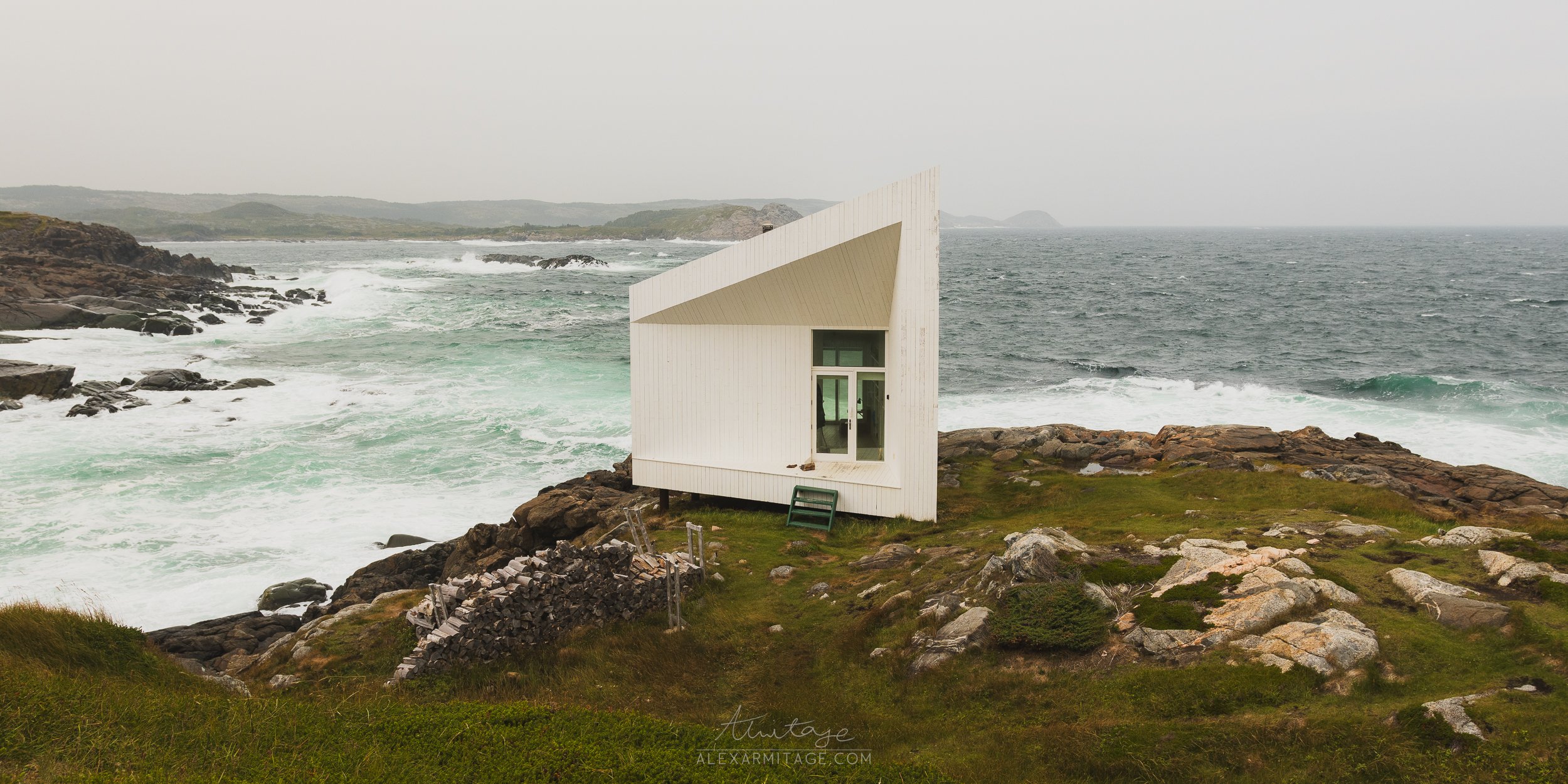
The Squish studio was my favorite studio to photograph as a landscape photographer. Strictly from an architectural perspective, it has really unique compositions and angles that I could have spent hours attempting to capture if it wasn’t for the relentless winds that were so strong that even a tripod wasn’t enough to stabilize my cameras.
The characteristic I really love about this spot is how well it integrates within the landscape. While all the structures felt like part of their surroundings, the squish studio contrasted with the coastline in the most unique way.
Shot advice: Most of these images were taken between 30mm and 50mm, but If you wanted to really highlight the geometry of the studio, an ultra-wide would serve quite well. Creatively you have to make a choice if you want to warp the image (ultra-wide) or keep the lines in the image as representative to real life as possible (50mm). You’ll likely want an ND Filter or set to get movement in the waves if you decide to include those in your shots, which for this studio is almost impossible not to.


Tower studio was unique in that it felt like you could photograph it from any direction and come away with an interesting image. The geometry of the building provides a lot of unique compositions as well. You’ll notice I didn’t get very abstract with many of these images, but there is absolutely plenty of room to explore, especially with a more abstract eye.
Imagine using the negative space of the black exterior mixed with the white paint on the front of the structure for a contrasted black and white look. I took an approach that included the landscapes as much as possible because that’s what I really wanted to capture, specifically how these structures were seamlessly integrated into their landscapes.
You’ll also notice that a few of these studios were being renovated recently as these had reached about 10 years old by the time I came around. Keeping perfect angles and seamless appeal isn’t easy in the elements of Fogo Island so it doesn’t surprise me they needed to be touched up a bit. This means that there was still construction equipment within the scene for the tower studio, and even more at the long studio.
Shot advice: I shot many of the images of the Tower studio on the longer end the standard focal range, 35-55mm. There’s even a few compositions from the distance using my telephoto lens that highlights the scale of the mountains behind the building which you can find in the above gallery. While I tend to avoid saying what “not” to use in a situation, this studio wouldn’t capture well at wider angles unless you’re intention is a more ominous asthetic.


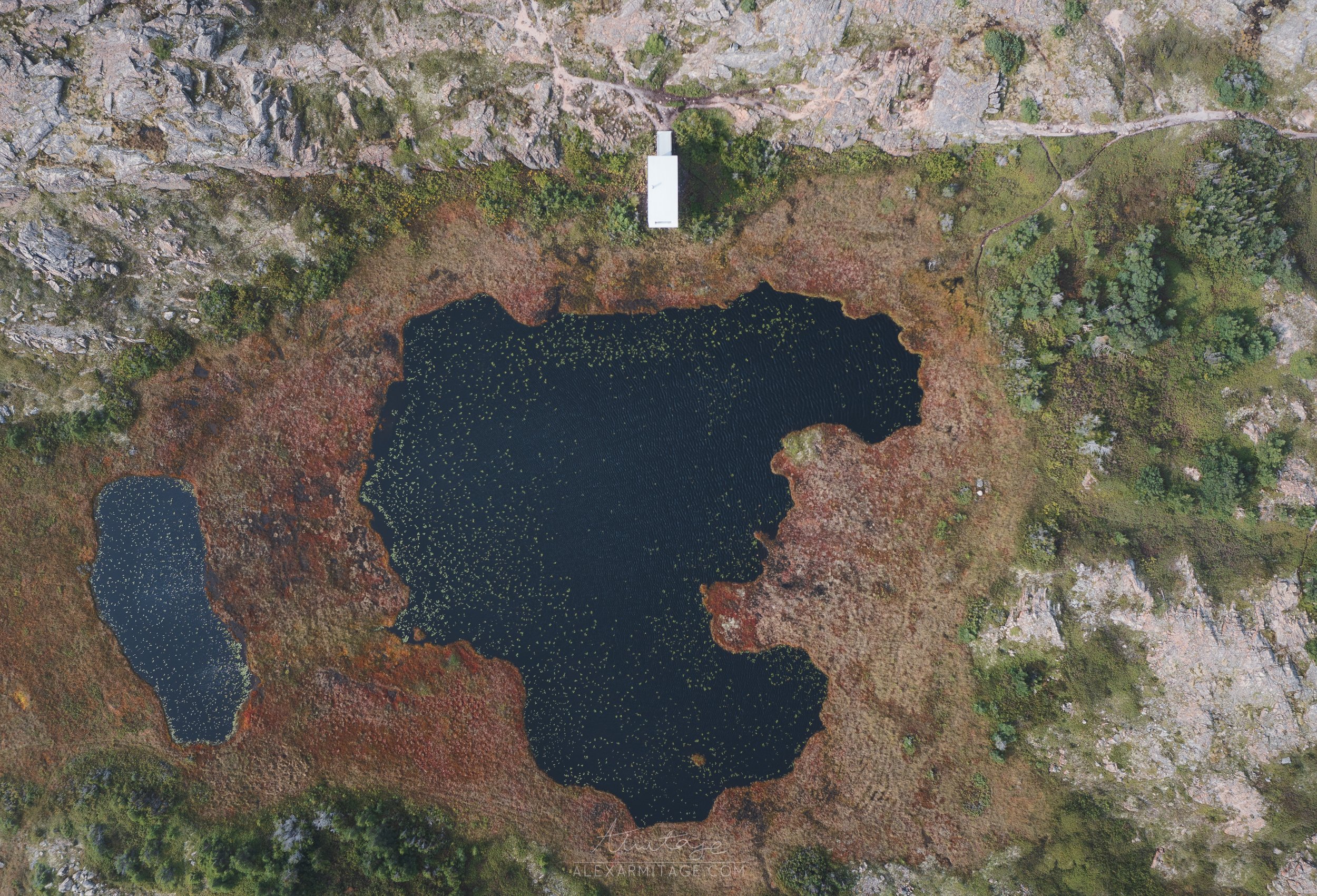

The Bridge studio rests a little higher above the others. Unlike the other coastal studios, this one is located with a bit of a hike up the mountains, but still completely accessible relatively quickly. Structurally this is the most simplistic of the group, but also feels the most secluded in nature. I even got a look inside to see just how minimal the interior truly is.
While the bridge studio isn’t as angular or geometrically unique, the location from a birds eye view provides a different feeling and vibe than any of the other studios. It really showcases just how varied the landscape of Fogo Island, or even Newfoundland, can be in even relatively short distances from each other.
Shot advice: Most of the best angles of this place were from the drone. If you have appropriate footwear you could find yourself across the pond to find some telephoto shots of the studio, but generally most of the business for this structure needs a birds eye view.


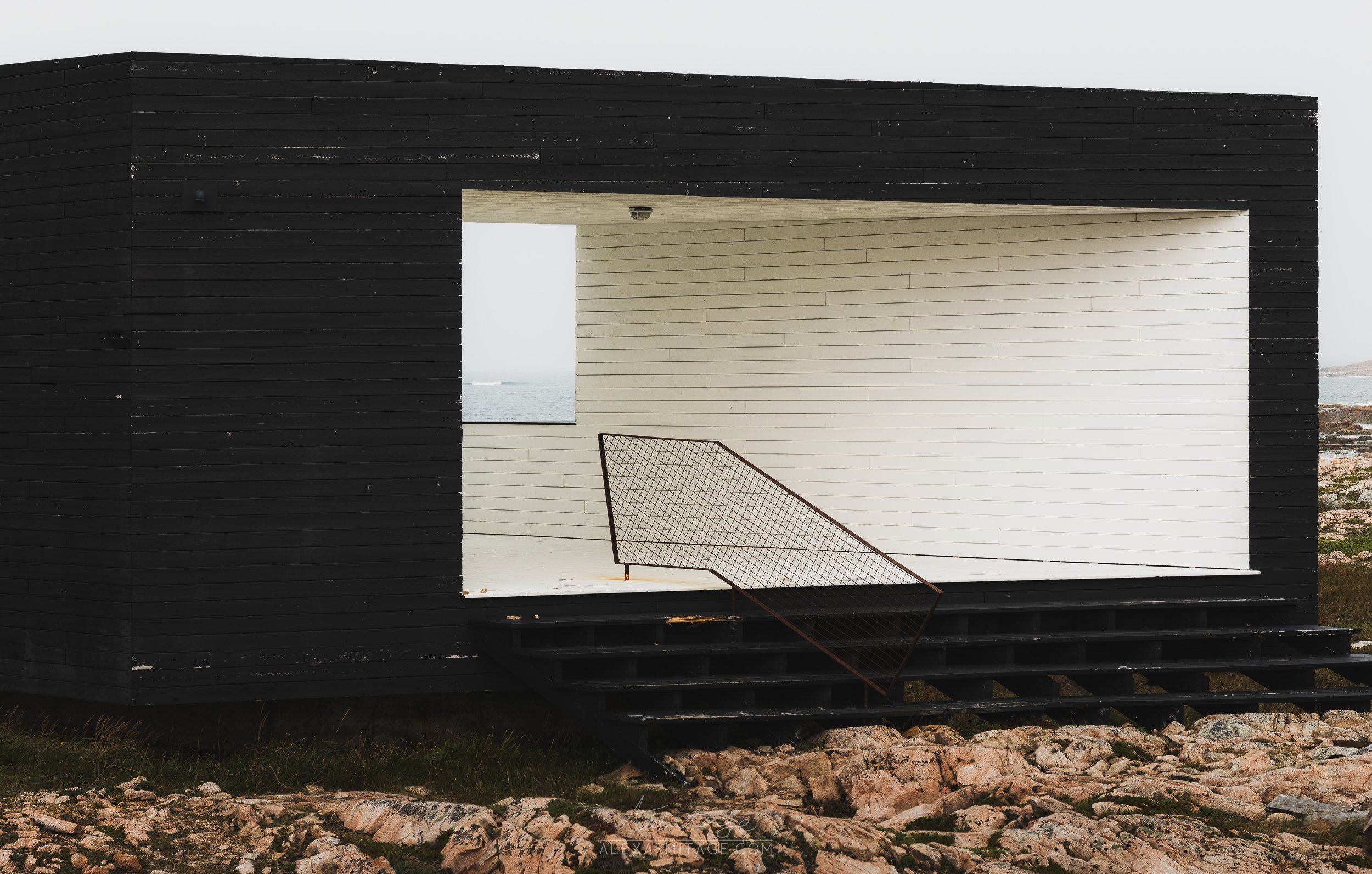
Long studio is within view of the Fogo Island Inn. However it holds its own unique place across the cove. I didn’t have great light the day of photographing this studio and as you can spot in a few of my photos that it was also being renovated but was not complete. This hindered quite a few angles I would have liked to capture. That being said, the photos I have here should give a really good idea of what the potential for this spot can be.
My goal was to capture these spaces with the landscape in mind and even then I took a few images that were much more about the simplistic form of the architecture’s shapes and shadows.
Shot advice: This is a pretty large studio compared to the rest. You could work with any focal range and come away with something pleasing. Personally this one probably has a lot of abstract potential that I just didn’t have the right light for. Notice the angles in the photos I captured and imagine excluding the landscape to focus on how the geometry, light, and shadow could exist within each other.
Traditional Fogo Island Buildings and Structures
So I’ve focused quite a lot on the modern architecture on the island but the truth is I took more photos of the traditional structures on the island than I did anything else. Spending over two months on “The Rock” (Newfoundland) meant I spent many days trying to capture the atmosphere of the entire province. This was no different on Fogo and I highly recommend you pause and take time to see the beauty in many of the buildings throughout the island.
An excerpt from one of the towns historical signs describes the history and usage for many of these outbuildings throughout the island:
Outbuildings for many special purposes were used to supplement house storage requirements, and for fishing and agriculture. Although some outbuildings were clustered around the house, others were dispersed within extended family neighbourhoods. Ownership of these buildings would be impossible to determine by outsiders. Their locations were determined by function, circulation paths, land ownership, garden ownership, and water access rights. Outbuildings were often constructed from material salvaged from other buildings. This stable was built with the beams and sheathing from an old house. Newspapers on the loft sheathing date from 1897 (Evening Herald). Houses were often turned into outbuildings if they had ceased to provide utility as dwellings, most often turning into barns or twine stores, as when Allan Keefe moved Fred Sounder's house from Cape Cove to Tilting and used it as a stable. Outbuildings were often sold and moved around the community, and their purposes could change; fish and carpentry store could later be used as a barn. Most outbuildings were detached, single purpose structures.
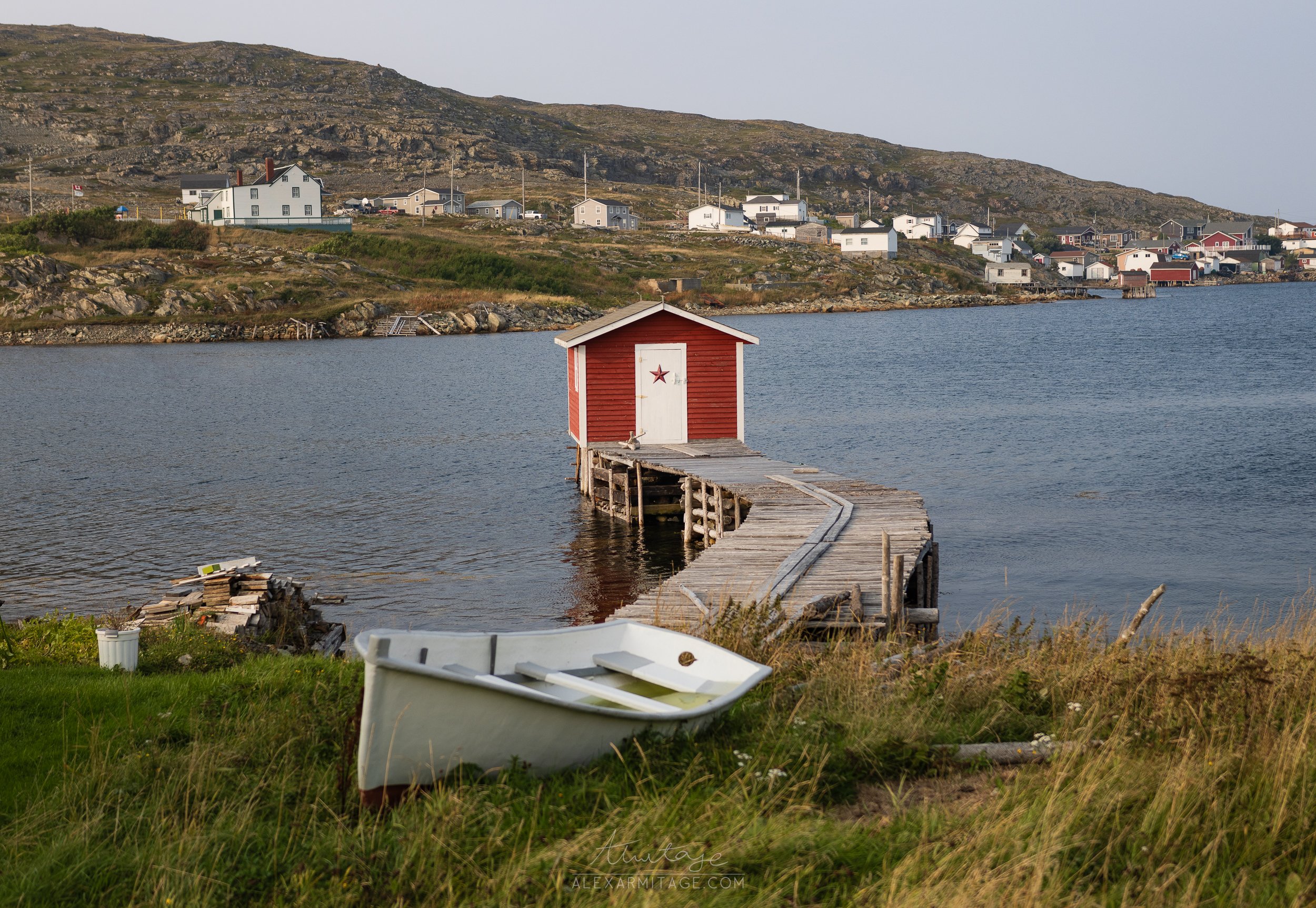




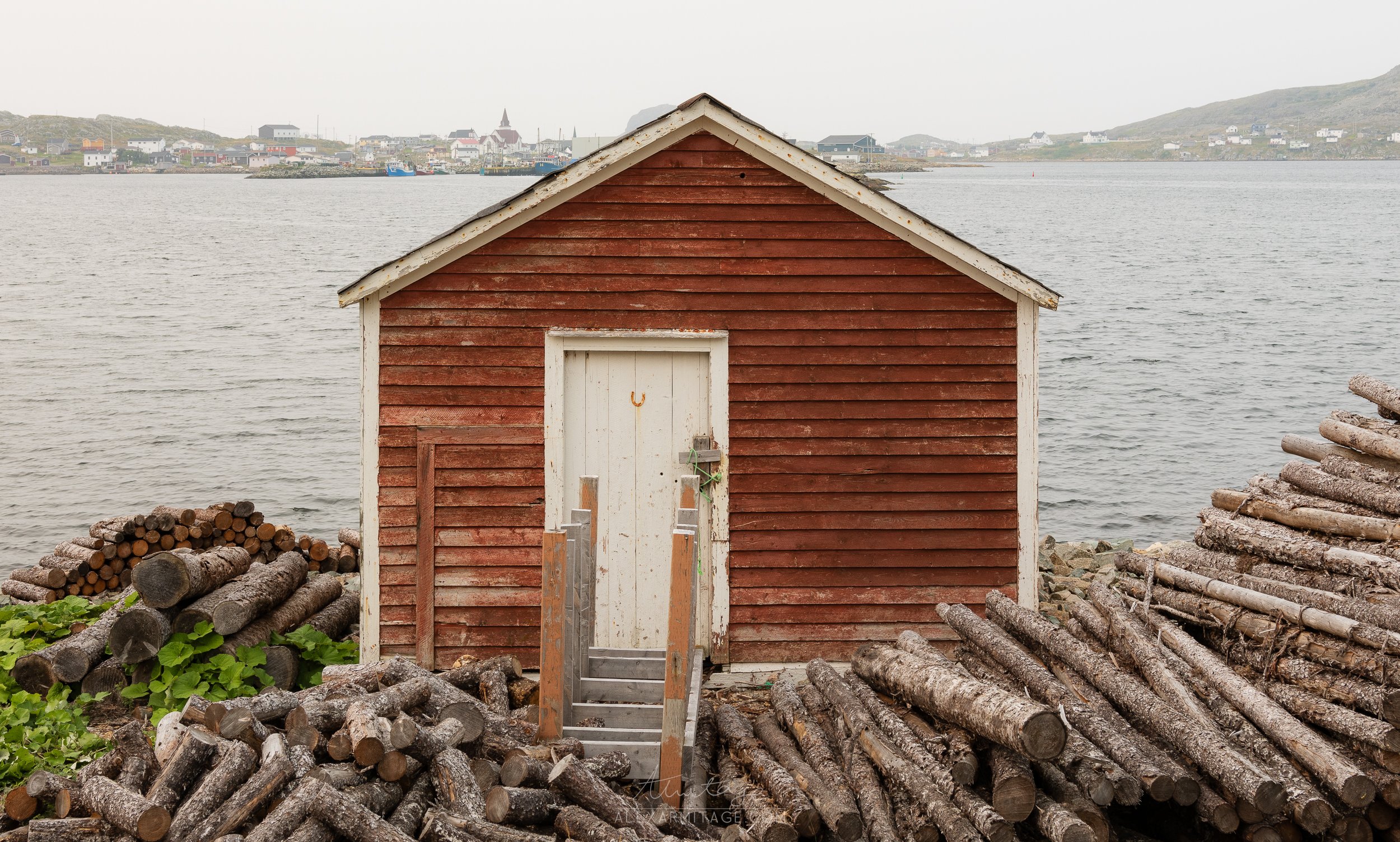



Shot advice: Ultimately there is so many directions you can go capturing this island. If you had to bring a single lens, I’d say 35-50mm is where you’d want to be. That being said you could make anything work depending on the direction you want to take your own images. I also cannot recommend a polarizer enough. The majority of the images in this gallery were taken using a polarizer. While it might not be obvious, it helps bring back detail in the buildings in many of the images throughout these galleries.







